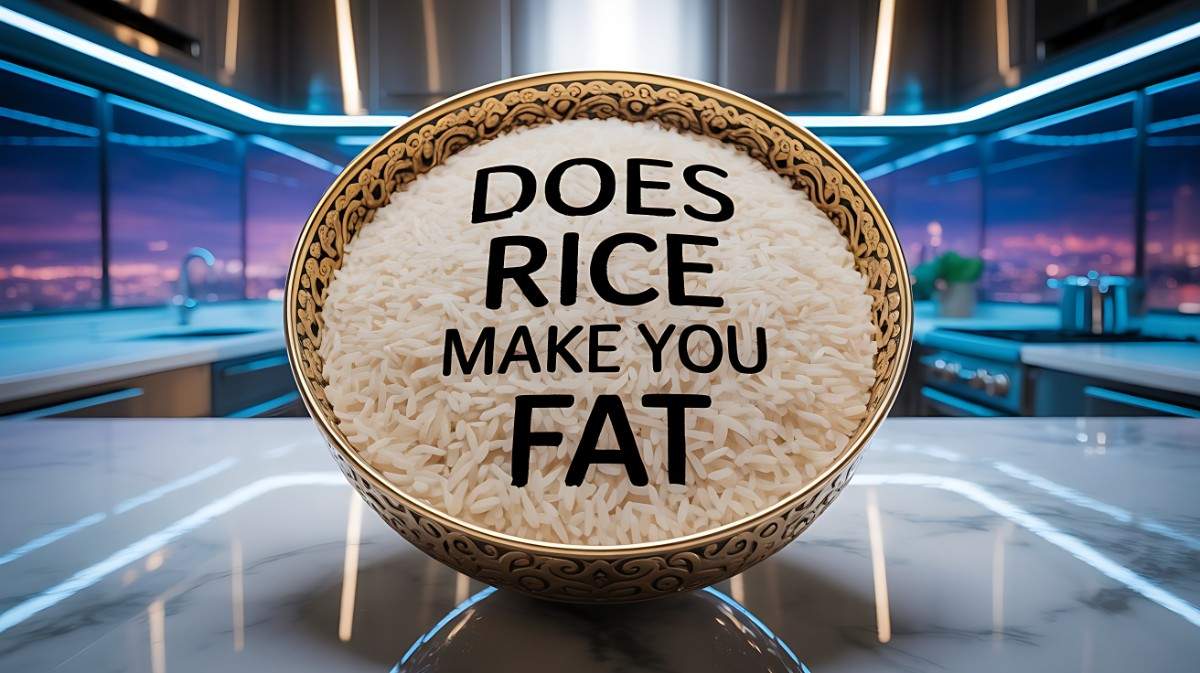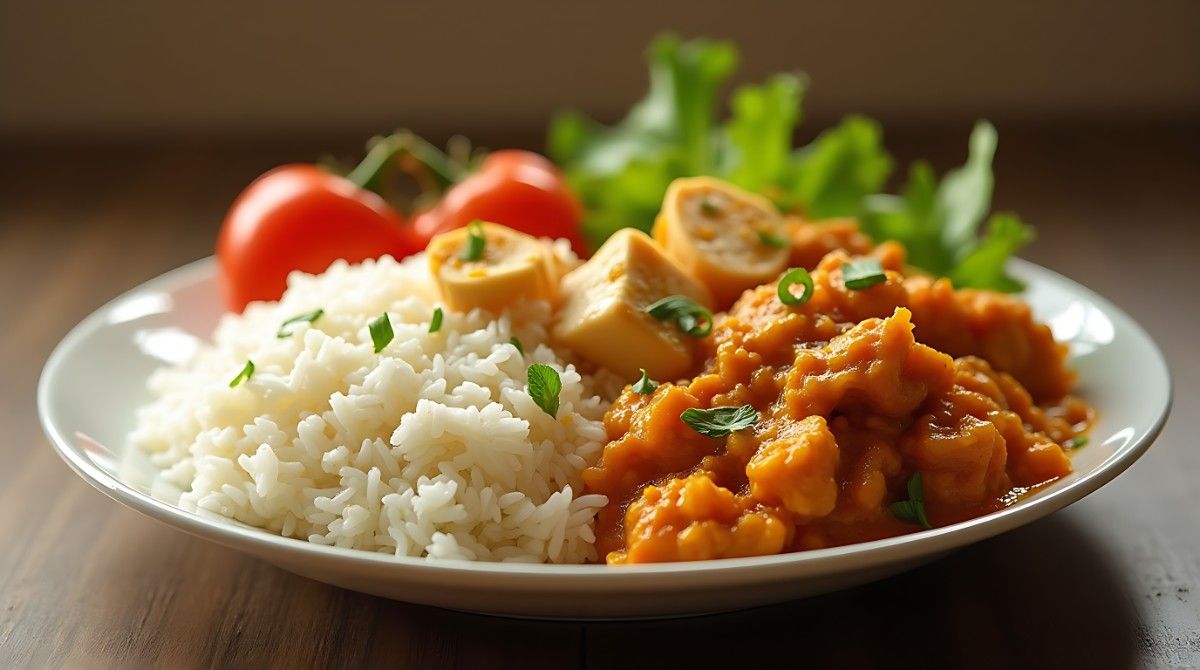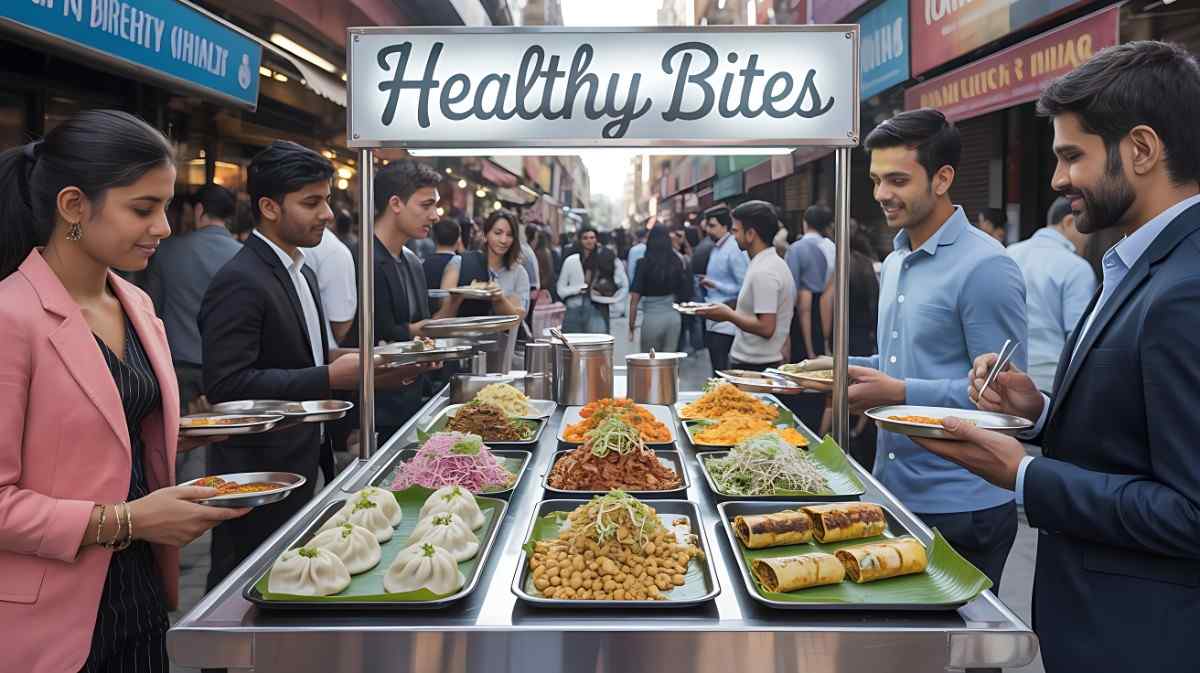
Does Rice Make You Fat?
The question, “Does rice make you fat?” is a source of anxiety for millions, especially those whose cultural diets are built around staples like rice, roti, and potatoes. If you’re consistently eating carb-dominant meals, like rice with vegetables for lunch, and have a fitness goal of losing 6 kg, understanding this food is crucial.
The definitive, expert answer by Mohit Verma, the founder of Fit with Mohit, is No, eating rice does not inherently make you fat. Weight gain is driven by a chronic calorie surplus—consuming more energy than your body uses. However, the context in which you consume your rice—the portion size, the lack of protein, and your sedentary workday—is what impacts your body composition. This deep-dive explores the science behind does eating rice make you fat, provides actionable solutions, and outlines how to optimize your carb intake for fat loss and better energy during long work-from-home hours.
The Science of Calories and Satiety: Does Rice Make You Fat?

Does Rice Make You Fat?
Rice is a simple, effective source of energy. The fear that white rice makes you fat is a myth rooted in misunderstanding calorie density and nutritional balance.
1. Calorie Density vs. Nutrient Density
Rice is a low-fat food, meaning it is not calorie-dense compared to fats or fried foods. A cup of cooked rice contains roughly 200-240 calories.
The Issue of Volume: The problem is that white rice offers very little satiety (a feeling of fullness) when eaten alone. It’s easy to eat a large, unrestricted portion, quickly pushing your overall meal into a significant calorie surplus, which is the real cause of weight gain.
The Missing Macronutrient: In your current diet, with protein being very low, your body never gets the strong signal to stop eating. Low protein and high, easily digestible carbs often lead to hunger soon after the meal, encouraging over-snacking.
2. White vs. Brown Rice: The Glycemic Index Effect
When considering does white rice make you fat, the key difference from brown rice lies in its processing:
| Rice Type | Nutritional Profile | Impact on Energy & Fat Storage |
| White Rice | Bran and germ removed. Lower fiber. Higher Glycemic Index (GI). | Digests rapidly, leading to quicker blood sugar spikes. This can promote energy storage (fat) if the energy isn’t immediately used. |
| Brown Rice | Whole grain. High in fiber, vitamins, and minerals. Lower GI. | Digests slowly, providing sustained energy and significantly boosting satiety, making it easier to manage calorie intake throughout your long workday. |
Verdict: While white rice won’t instantly make you fat, the rapid digestion can be counterproductive for weight loss. Opting for brown, parboiled, or even cooled white rice (which creates beneficial resistant starch) is the smarter move. So rice does not makes you fat.
Does Rice Make You Fat?
Protein: The Real Solution to the "Does Rice Make You Fat" Problem

For individuals with a carb-dominant diet and a weight loss goal, shifting focus from eliminating rice to maximizing protein is the single most important change.
1. Fueling Your Gym Session and Recovery
Your 9 AM daily gym session requires strategic post-workout nutrition. Protein is vital for muscle repair, especially when your focus is on safe strength + cardio to protect your recent Hernia operation recovery.
The Problem with Milk + Banana: While a good source of carbs/energy, your current breakfast (Milk + banana) is insufficient for muscle repair. Muscle is metabolically active, meaning the more muscle you have, the more calories you burn at rest. A lack of protein hinders the development of this metabolism-boosting muscle.
Post-Workout Solution: Your post-workout meal should aggressively prioritize protein. Add a scoop of protein powder to your milk/banana shake, or include two hard-boiled eggs for immediate, safe muscle support.
2. Optimizing Your High-Carb Meals for Fat Loss
To ensure your Rice with vegetables lunch and Roti + sabzi dinner support your goal, apply the Protein-First Rule:
Lunch: Add a high-protein side. Options include a small bowl of Greek yogurt, a scoop of cottage cheese (paneer), or a generous serving of dal/lentils with your rice and vegetables.
Dinner: Ensure your sabzi is high in pulses or legumes, or include a side of tofu, chana, or other plant-based proteins.
By adding 20-30 grams of protein to these meals, you significantly increase the Thermic Effect of Food (TEF), meaning your body burns more calories just to digest the meal, further helping you achieve your 6 kg weight loss goal.
3. The WFH and NEAT Strategy (Movement is Metabolism)
For someone with long sitting hours (10 AM to 10 PM), the low-calorie expenditure outside the gym (low NEAT) is a greater contributor to weight gain than the rice itself.
The 10-Minute Post-Meal Walk
To counteract the carbohydrate load from your lunch or dinner, incorporate movement:
Stop Work: Immediately after lunch (Rice with vegetables), set a 10-minute timer.
Move: Do a quick walk around your house or garden. This is a crucial element of your NEAT (Non-Exercise Activity Thermogenesis).
The Benefit: This simple movement helps your muscles use the circulating glucose from the rice for energy, rather than storing it as fat. It smooths out blood sugar spikes, which is beneficial for sustained energy during your long workday.
For more strategic food choices that align with your health and fitness goals, be sure to read our related article: Healthiest fast food in India
Does Rice Make You Fat?

Frequently Asked Questions (FAQs): Does Rice Make You Fat
Is it okay to eat rice at night?
How much rice is too much for weight loss?
Can I still enjoy my weekly biryani cheat meal?
About the Author Mohit Verma

Mohit Verma, Fitness Enthusiast & Wellness Practitioner
Mohit Verma has Experience and Expertise living the modern lifestyle challenges, including navigating a demanding 12-hour work-from-home schedule with limited time for fitness and nutrition. His journey includes a successful recovery from a Hernia operation, providing him with a unique Trustworthiness and perspective on safe, low-impact strength training and cardio. Mohit’s commitment to self-improvement and practical, protein-forward dietary adjustments for high-carb, staple-heavy meals establishes him as an Authoritative voice for others facing similar work-life balance and fitness constraints.
Stay connected for more practical, safe, and effective fitness and nutrition tips tailored for your work-from-home life:
Want to get A customized Diet Plan
Please fill the form below and our team will soon contact you.
